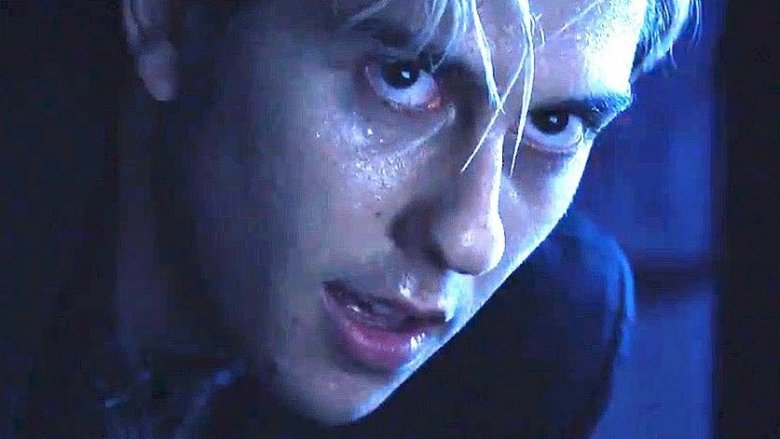How Netflix's Death Note Differs From Its Source Material
Warning: This post contains spoilers for Netflix's Death Note.
When it comes to adaptations, the end result is likely to have a number of elements that differ from the book, comic, or other entertainment property upon which it's based. But in the case of Netflix's Death Note, which translates the beloved manga created by Tsugumi Ohba and Takeshi Obata, director Adam Wingard made quite a few drastic changes. From giving characters anglicized names, relocating the setting from Tokyo to Seattle, and casting both white and non-white actors in Japanese roles, Wingard's adaptation of Death Note could cause some to argue it deviates too far from its source material.
In light of the film's recent release on Netflix, Wingard spoke with The Hollywood Reporter about some of the changes he employed and why.
The movie, which centers around a high school teen named Light Turner (Nat Wolff) who finds a supernatural notebook that allows him to kill others simply by writing down their name, seems to present its protagonist in a more sympathetic manner than the anime did. So when Light ultimately succumbs to the temptation of murder, it's quite a surprise. Wingard explained that he views Light's trajectory as "being sort of an Anakin Skywalker type of thing that progresses over the course of a couple of movies," which is why he was shown as comparatively more sensitive.
Wingard altered Light from the original Death Note in this regard by "splitting" the character between Light himself and his girlfriend, Mia Sutton (Margaret Qualley), known as Misa Amane in the Japanese version. "Ultimately, what we did was, the original Light character from the source material is in this film. What's happened is it's kind of been split into the two characters. Light and Mia in this case make up the whole character. It's really not just one or the other," Wingard said. "In some ways, Mia is almost more like Light from the anime. That was always a conscious choice, because this film was a coupling of those two to give birth—literally—to Kira [the identity to whom the public attributes Light's killings] and to watch that thing unfold and to see how that can go kind of wrong, too. Ultimately at the heart of this film, it's really a tragic teenage romance, or at least that what it became."
Speaking of Mia, she's markedly more savvy in Wingard's version of Death Note than she is in the source material. Wingard stated that her becoming an active character was "one of the things [he] brought to it as a director," and that Mia was always in the script but under a different name at first. "She was much more of a peripheral girlfriend character [in the manga and anime] Light used the note to impress. I felt like it needed something more. There was a real opening for this," said Wingard.
Another stark contrast is the film's ending, which will be unfamiliar to those who know the Death Note anime. Wingard explained that he kept the ending "open as a sequel" because when he initially approached Netflix about the adaptation, he pitched it "as at least a two-film series, maybe three," with the first being the origin story. "We definitely designed the film so it plays a closed loop. Sequels are never guaranteed. They have to be earned," the director said. "On some level, I really love that the movie ends with all the characters damaged. It's such an unconventional ending for any kind of comic book film, and I really like that."
Along with Wolff as Light and Sutton as Mia, Death Note stars Shea Whigham as James Turner, Willem Dafoe as Ryuk, Lakeith Stanfield as L. Death Note is now streaming on Netflix.
If you've already checked it out, see some of the best movies available on Netflix right now.
